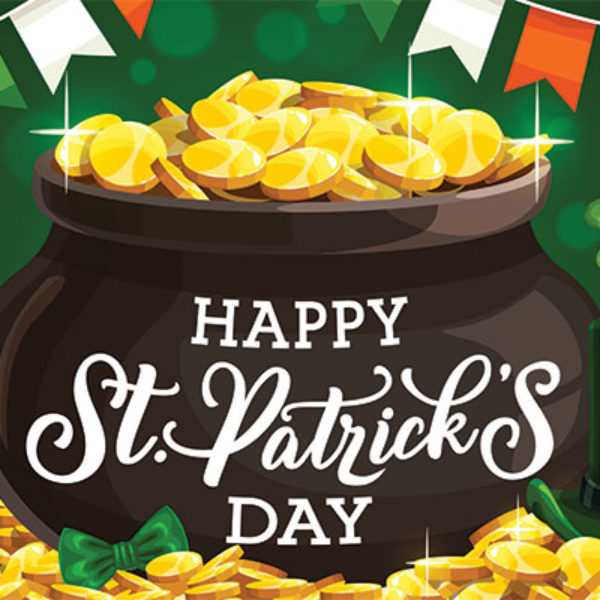
Lunar New Year
by Desmond Devine
Origin
Lunar New Year is celebrated by many cultures, including the Chinese New Year, and it begins with the first new moon of the year and ends with the full moon that occurs about fifteen days after the new moon. Every Lunar New Year is represented with one of twelve animals in the Chinese zodiac, each representing different personality traits. The signs repeat in a twelve year cycle. Each animal is also given the properties of one of five elements: earth, fire, metal, water, and wood. Each cycle of signs is given its own element, and the cycle of elements repeats itself every five sign cycles. This year is the year of the Water Tiger. The Water Tiger represents courage, strength, and the forces of good.

Chinese New Year
It is believed that Chinese New Year has been celebrated since the 14th century B.C., during the time of the Shang Dynasty. Around 100 B.C. was when the tradition of doing rituals on Chinese New Year began. The rituals served to honor the gods in hopes of a good harvest. The Chinese government led under Communist leader Mao Zedong ceased celebration of Chinese New Year in 1949. Towards the end of the 20th century, the government became more open to Chinese New Year celebrations and gave people a week off during a period known as the Spring Festival. Today people celebrate by being with their families, giving money to others in red envelopes, and eating traditional foods such as fish, dumplings, moon cakes, and rice ball soup. At the end of the celebration, the Lantern Festival occurs in which people light colorful lanterns to decorate their homes as well as participating in games, parades, and dances. Firework displays also celebrate the end of the Spring Festival. The lighting and letting go of the lanterns symbolizes letting go of people’s past transgressions.

Vietnamese New Year
Vietnam’s Lunar New Year is known as Tet Nguyen Dan and usually shortened to just “Tet”. It spans 5-7 days, beginning on the same day as Chinese New Year, and also marks the beginning of Spring. During this time, Vietnamese people give reverence to their ancestors and hold family reunions. People are mindful, believing that what they do during Tet will affect the rest of the year. Before Tet, families clean and decorate their homes, family shrines, and the graves of deceased family members. People light incense and leave offerings of fruit and flowers on the shrines along with pictures of ancestors, similar to the traditions of Día de los Muertos in Mexico. Traditional foods are enjoyed, such as banh chung, a ball of rice filled with meat or bean paste and wrapped in banana leaves, and xoi, Vietnamese sticky rice.

A picture of a dragon dance
Korean New Year
In Korea, Lunar New Year is known as Seollal and is celebrated similarly to Chinese New Year. When Japan annexed Korea from 1910 to 1945, Lunar New Year was officially stopped. Celebrations made a comeback in 1989, and the day of celebration shifted to occur based on the lunar calendar. Families participate in a ritual in which reverence is given to ancestors and the elderly. In both North and South Korea, traditional dishes include sliced rice cake soup, which marks a person’s Lunar Calendar Birthday upon consumption. Games are played, such as Yut Nori, a relay race where players move depending on how they throw colored sticks, which function similarly to dice.

A bowl of rice cake soup
Mongolian New Year
Lunar New Year is known as Tsagaan Sar in Mongolia and shares many characteristics with Chinese New Year. For example, it uses the same zodiac as China to name new years. It was created in 1206 under the rule of Chinggis Khan. On Bituun, the evening of the day before Lunar New Year begins, families gather at the home of the oldest member to have a feast and play games. On the first day, before the sun rises, people make milk tea and visit their elders. Traditional meals eaten during Tsagaan Sar include buuz, dumplings filled with minced beef or lamb, and ul boov, long biscuits stacked on plates. Since Tsagaan Sar feasts are large, families have to start cooking them days in advance.

A traditional Tsagaan Sar greeting, in which a person greets an old relative by placing their hands below the other’s arms and saying “Amar baina uu”, meaning, “How are you?”
Tibetan New Year
In Tibet, New Year is known as Losar and takes place on December 29th on the Tibetan lunar calendar. Celebrations last two weeks. It was created after the marriage of Princess Wencheng of Han and the King of Tibet, Songtsan Gampo in 641 AD, which united the two nations. In the streets people sing and perform dances and act out battles. The two days before the new year are called “Gutor”. On the first day, families clean their homes. On the second day, people perform religious ceremonies and give to charity. On the first day of New Year, families come together for a reunion dinner and give each other presents. On the second day, families visit their friends and relatives. On the third day, families visit monasteries and hang prayer flags on the tops of houses and along mountains. A traditional food eaten during Losar is guthuk, a soup with dumplings. The ingredients the chef puts in a person’s dumplings is a playful commentary on their personality.

Sources
https://www.britannica.com/topic/Lunar-New-Year
https://www.history.com/topics/holidays/chinese-new-year
https://people.howstuffworks.com/culture-traditions/holidays-other/billions-celebrate-lantern-festival-across-china.htm
https://www.britannica.com/topic/Lantern-Festival
https://asiasociety.org/korea/seollal-korean-lunar-new-year
https://www.asiahighlights.com/vietnam/new-year
https://www.itourvn.com/blog/a-look-into-vietnamese-lion-and-dragon-dance
http://nayazaya.blogspot.com/2019/01/the-tsagaan-sar.html




